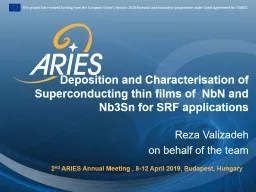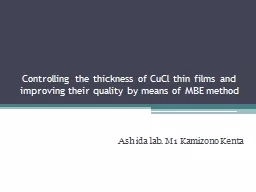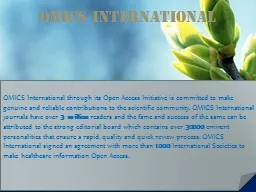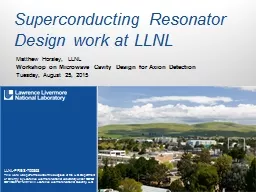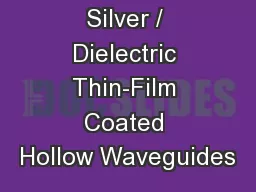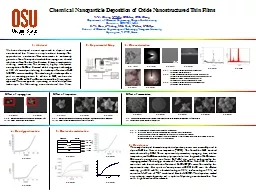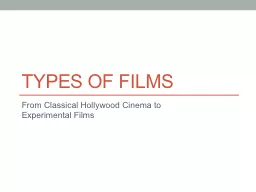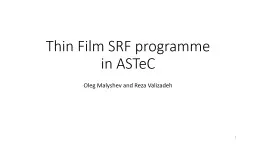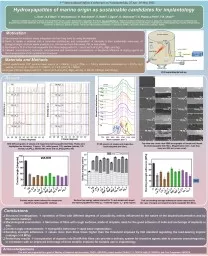PPT-Deposition and Characterisation of Superconducting thin films of
Author : pattyhope | Published Date : 2020-06-29
NbN and Nb3Sn for SRF applications Reza Valizadeh on behalf of the team 2 nd ARIES Annual Meeting 812 April 2019 Budapest Hungary MOTIVATION Bulk niobium
Presentation Embed Code
Download Presentation
Download Presentation The PPT/PDF document "Deposition and Characterisation of Super..." is the property of its rightful owner. Permission is granted to download and print the materials on this website for personal, non-commercial use only, and to display it on your personal computer provided you do not modify the materials and that you retain all copyright notices contained in the materials. By downloading content from our website, you accept the terms of this agreement.
Deposition and Characterisation of Superconducting thin films of: Transcript
Download Rules Of Document
"Deposition and Characterisation of Superconducting thin films of"The content belongs to its owner. You may download and print it for personal use, without modification, and keep all copyright notices. By downloading, you agree to these terms.
Related Documents

